Staycation: Visit the Hidden Gems of Westchester this Summer
- Details
- Hits: 6032
 Summer 2020 is looking a lot different from what we expected. Many camps are closed for the season, and those that aren’t are definitely not running their usual programs. Are you in need of ways to occupy your children with fun and engaging activities this summer?
Summer 2020 is looking a lot different from what we expected. Many camps are closed for the season, and those that aren’t are definitely not running their usual programs. Are you in need of ways to occupy your children with fun and engaging activities this summer?
If your children cannot go to camp, bring camp to them! Below is a list of simple yet exciting backyard activities that will make your kids feel like they’re back at summer camp. Additionally, with Westchester in the midst of reopening, this is the perfect time to explore hidden gems within your community. Here are some ideas to make the summer of 2020 unforgettable!
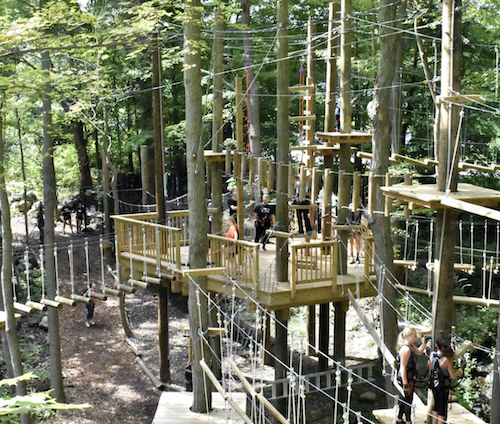 A trip to Boundless Adventures is guaranteed to be full of fun. Located in Purchase, this adventure park is home to many challenge courses, with levels ranging from beginner to expert. Guests spend their day climbing, swinging, zip-lining, and traversing through tree-top ropes courses. This experience will truly make children feel like they are back at camp.
A trip to Boundless Adventures is guaranteed to be full of fun. Located in Purchase, this adventure park is home to many challenge courses, with levels ranging from beginner to expert. Guests spend their day climbing, swinging, zip-lining, and traversing through tree-top ropes courses. This experience will truly make children feel like they are back at camp.
Boundless Adventures
735 Anderson Hill Road
Purchase, NY 10577
(914) 893-4550
Learn more here.  Cranberry Lake Preserve is another great location for a hike and a picnic. Visitors can enjoy a hike around Cranberry Lake, as well as educational displays of live animals. The park’s trails range in difficulty, making them perfect for hikers of all skill levels.
Cranberry Lake Preserve is another great location for a hike and a picnic. Visitors can enjoy a hike around Cranberry Lake, as well as educational displays of live animals. The park’s trails range in difficulty, making them perfect for hikers of all skill levels.
Cranberry Lake Preserve
1609 Old Orchard Street
West Harrison, NY 10604
(914) 428-1005
Learn more here.
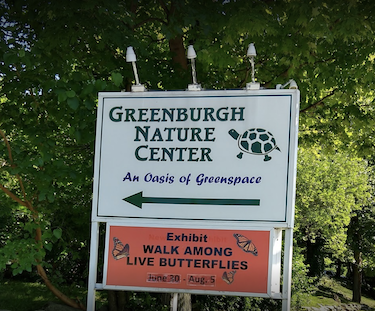 Enjoy a nature walk or observe animals in their natural habitat at the Greenburgh Nature Center. Although the indoor programming at the nature center remains closed due to COVID-19, visitors can still enjoy a remarkable experience on the outdoor grounds.
Enjoy a nature walk or observe animals in their natural habitat at the Greenburgh Nature Center. Although the indoor programming at the nature center remains closed due to COVID-19, visitors can still enjoy a remarkable experience on the outdoor grounds.
Greenburgh Nature Center
99 Dromore Road
Scarsdale, NY 10583
(914) 723-3470
Learn more here.
 The John Jay Homestead is located on a breathtaking landscape just a short drive north of Scarsdale. The Historic Landscape Tours give visitors the chance to explore the homestead and learn about this historically significant land. This interactive tour is a great learning experience for children. You will definitely leave with more knowledge than you came with!
The John Jay Homestead is located on a breathtaking landscape just a short drive north of Scarsdale. The Historic Landscape Tours give visitors the chance to explore the homestead and learn about this historically significant land. This interactive tour is a great learning experience for children. You will definitely leave with more knowledge than you came with!
John Jay Homestead
400 Jay Street
Katonah, NY 10536
(914) 232-5651
Learn more here.
 North County Trailway is full of outstanding scenery, making it the perfect place for a bike ride or a long walk. The trailway spans 22.1 miles, running from Mount Pleasant to Somers. This lengthy and scenic route passes through several reservoirs, and is definitely worth visiting.
North County Trailway is full of outstanding scenery, making it the perfect place for a bike ride or a long walk. The trailway spans 22.1 miles, running from Mount Pleasant to Somers. This lengthy and scenic route passes through several reservoirs, and is definitely worth visiting.
North County Trailway
962 Bedford Road
Pleasantville, NY 10570
(914) 864-7275
Learn more here.
 Would it really be summer without a day at the beach? Soak up the sun or ride the waves at The Beach at Playland, a quick and easy getaway. The beach is open at 50% capacity to ensure the experience is safe.
Would it really be summer without a day at the beach? Soak up the sun or ride the waves at The Beach at Playland, a quick and easy getaway. The beach is open at 50% capacity to ensure the experience is safe.
The Beach at Playland
1 Playland Parkway
Rye, NY 10580
(914) 813-7010
Learn more here. 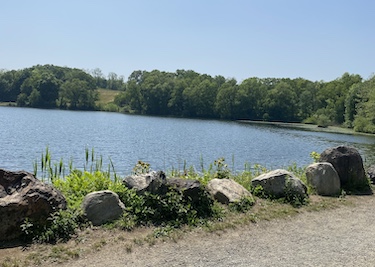 Take a relaxing walk around the reservoir at Rockefeller State Park Preserve, which is home to many outdoor trails surrounded by fantastic greenery. Most visitors come to enjoy a low-impact hike, a run, or even a picnic. The trails are easy to navigate, making sure the experience is fun-filled for all.
Take a relaxing walk around the reservoir at Rockefeller State Park Preserve, which is home to many outdoor trails surrounded by fantastic greenery. Most visitors come to enjoy a low-impact hike, a run, or even a picnic. The trails are easy to navigate, making sure the experience is fun-filled for all.
Rockefeller State Park Preserve
125 Phelps Way
Pleasantville, NY 10570
(914) 631-1470
Learn more here.
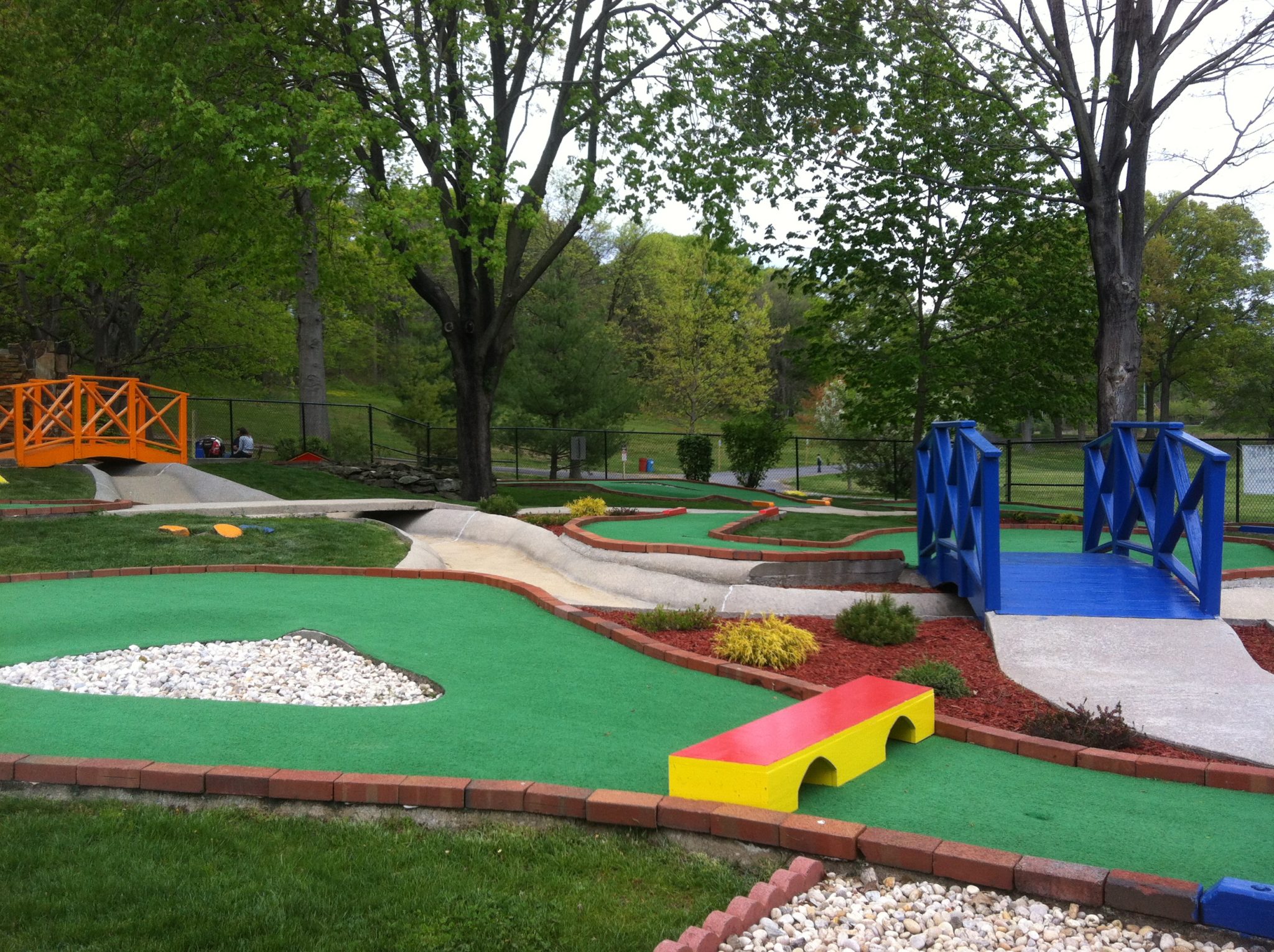 The Saxon Woods Mini Golf course is open for another season of family fun. Each hole is more exciting than the last, and the experience never disappoints.
The Saxon Woods Mini Golf course is open for another season of family fun. Each hole is more exciting than the last, and the experience never disappoints.
Saxon Woods Mini Golf
1800 Mamaroneck Avenue
White Plains, NY 10604
(914) 995-2618
Learn more here. 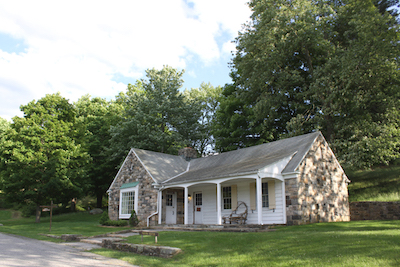 Ward Pound Ridge Reservation is the largest park in Westchester County, located on 4,315 acres of land. The park offers equestrian facilities, giving visitors a unique and exciting way to peruse the landscape. There are 35 miles of trails waiting to be explored by you and your family!
Ward Pound Ridge Reservation is the largest park in Westchester County, located on 4,315 acres of land. The park offers equestrian facilities, giving visitors a unique and exciting way to peruse the landscape. There are 35 miles of trails waiting to be explored by you and your family!
Ward Pound Ridge Reservation
Reservation Road
Pound Ridge, NY 10576
(914) 864-7317
Learn more here.
Opening Soon!
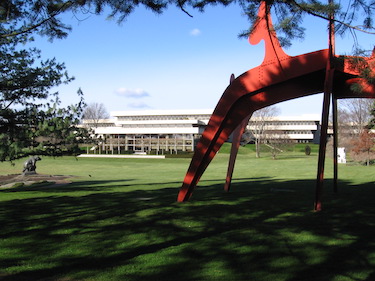
Donald M. Kendall Sculpture Gardens
700 Anderson Hill Road
Purchase, NY 10577
(914) 253-3150
Learn more here.
 The Storm King Art Center offers a display of extraordinary modern and contemporary artwork. The art collection includes sculptures, drawings, and photographs that are situated throughout the center’s landscape. Make sure to keep this experience in mind for a future summer excursion! Opening July 15.
The Storm King Art Center offers a display of extraordinary modern and contemporary artwork. The art collection includes sculptures, drawings, and photographs that are situated throughout the center’s landscape. Make sure to keep this experience in mind for a future summer excursion! Opening July 15.
Storm King Art Center
1 Museum Road
New Windsor, NY 12553
(845) 534-3115
Learn more here.
There’s Something for All Ages at Hoff-Barthelson this Summer!
- Details
- Written by: Joanne Wallenstein
- Hits: 2490
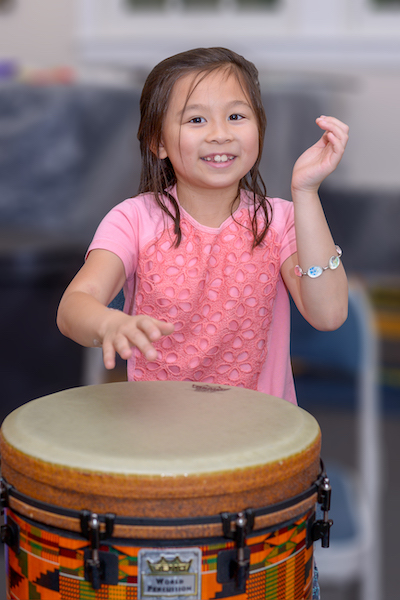 Hoff-Barthelson Music School is offering online lessons and summer programs for all ages. Photo by Steven Schnur.There is something for all ages being offered online at Hoff-Barthelson Music School this summer—Summer Lessons (for both children and adults), the Summer Arts Program for students entering 1st - 12th grades, and Early Childhood Classes for the youngest musicians. While we will dearly miss seeing everyone in person on campus, we promise you a summer that is engaging, has flexible options that work well online, and provides students the opportunity to participate in many of their favorite musical activities.
Hoff-Barthelson Music School is offering online lessons and summer programs for all ages. Photo by Steven Schnur.There is something for all ages being offered online at Hoff-Barthelson Music School this summer—Summer Lessons (for both children and adults), the Summer Arts Program for students entering 1st - 12th grades, and Early Childhood Classes for the youngest musicians. While we will dearly miss seeing everyone in person on campus, we promise you a summer that is engaging, has flexible options that work well online, and provides students the opportunity to participate in many of their favorite musical activities.
Our popular Summer Arts Program will take place online this summer!
Hoff-Barthelson’s Summer Arts Program Online provides a stimulating, challenging, and fun-filled opportunity for students entering grades 1-12. Our online, 3-day per week program is highly customizable, offering students the opportunity to grow in their enjoyment and practice of music while minimizing screen time.
Students may combine classes to focus on classical music performance, jazz and popular music, music technology, musical theater, composition and arranging, or other areas of interest. Configure classes to suit your interests and scheduling needs. Elective classes encourage the exploration of new interests: learn a second instrument, learn to put music technology to creative use, and/or jump-start your knowledge of music theory and history. Our exceptional faculty made up of some of the top performers and music educators in our area provide personalized attention to each student.
All students are encouraged to take advantage of private lessons and to schedule time with a Practice Partner (a Summer Arts Program high school or college intern) to optimize learning at home.
Summer Lessons for all students of all ages are being offered online through August 28.
Take advantage of our summer discounts and flexible scheduling for private lessons! Since tuition does not include musicianship classes or ensemble opportunities, price points are considerably lower than during the academic year. To entice you further, we are pleased to offer a 10% discount on purchases of 3 or more lessons per student. Get a head start on new music for the fall and combat summer learning loss. Try a new instrument, or explore whether a little one is ready for private instruction by “test driving” lessons.
Online Summer Early Childhood Classes to be offered over three two-week sessions.
We are excited to share a new online Summer Early Childhood Music and First Instrument program for children and families this summer. Classes offered: Seasons of Song (Ages 2-3); Getting to Know You: Exploring the Instruments (Ages 4-6); Beginning Musicianship: Listening and Learning in Action (Ages 5- Kindergarten); Piano Together – Group Piano Classes (Ages 4-5); Suzuki Pre-Twinkler Violin (Ages 3-4); and All Ages Sing-Along!
For additional information visit www.hbms.org. The best way to reach is by e-mail at hb@hbms.org. Please include your preferred phone number and instructions as to the best time to reach you during office hours and on Saturdays. We will get back to you as soon as possible!
About Hoff-Barthelson Music School:
Hoff-Barthelson Music School has achieved national recognition as a premier community music school for its unsurpassed leadership in education, performance and community service. With a faculty drawn from the region’s most talented teachers and performers, the School has long been one of Westchester County’s most cherished cultural resources. At Hoff-Barthelson, students find a warm, friendly music school dedicated to the highest standards of education, performance, and community service. Students of all ages, aptitudes, and levels of interest enjoy a supportive, joyful learning environment; a focus on the whole person; exceptional teaching; and a multifaceted curriculum.
Quarantine Creations: The Silver Linings of COVID-19
- Details
- Hits: 3951
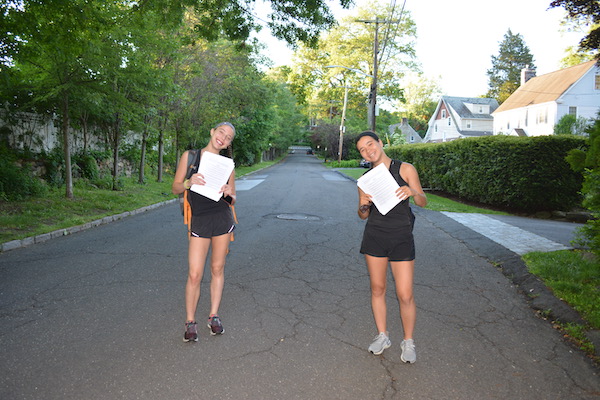 Julia Kushnick and Riena Parente After Completing Their MarathonFor students, the COVID-19 pandemic has surely redefined the meaning of “free time.” Most of us have never experienced a lack of structure for this long, and it is sometimes difficult to fill our days with enough meaningful activity. Some students saw an opportunity to fill this time by taking on a challenge or embarking on a new venture. In addition to the passion projects completed by SHS seniors, several other students have used the abundance of free time to pursue new hobbies, help others, or raise awareness for important causes.
Julia Kushnick and Riena Parente After Completing Their MarathonFor students, the COVID-19 pandemic has surely redefined the meaning of “free time.” Most of us have never experienced a lack of structure for this long, and it is sometimes difficult to fill our days with enough meaningful activity. Some students saw an opportunity to fill this time by taking on a challenge or embarking on a new venture. In addition to the passion projects completed by SHS seniors, several other students have used the abundance of free time to pursue new hobbies, help others, or raise awareness for important causes.
Here are some innovative projects completed by SHS students during these unprecedented times:
Jay Greenwald, Matt Hoffman, Matt Sussman, Jack Silvers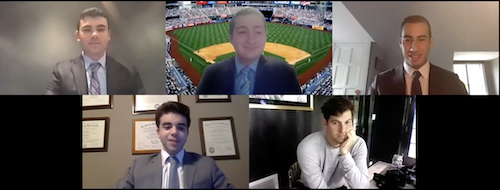 When the senior options program was altered due to the restrictions of COVID-19 many students were left without a project. A group of SHS seniors have used this time to create a sports talk show.
When the senior options program was altered due to the restrictions of COVID-19 many students were left without a project. A group of SHS seniors have used this time to create a sports talk show.
Jay Greenwald, a founder of the project, shares his thoughts: “So many of us wanted to participate in the show that the idea grew from one general sports show into two more specialized shows, one about baseball and one about basketball. We named the show the Corona Sports Network, consisting of CSN Base and CSN Hoop. For the past three weeks we have been planning talk shows and recording ourselves on Zoom amidst heated debates. CSN Base has featured two special guests, Yankees reliever Adam Ottavino and MLB Network writer Sarah Langs. Although it is unfortunate that we did not get to have in-person internships this year, creating these videos has been an incredible experience that brightened up my quarantine. Check out our videos on YouTube.”
Riena Parente and Julia Kushnick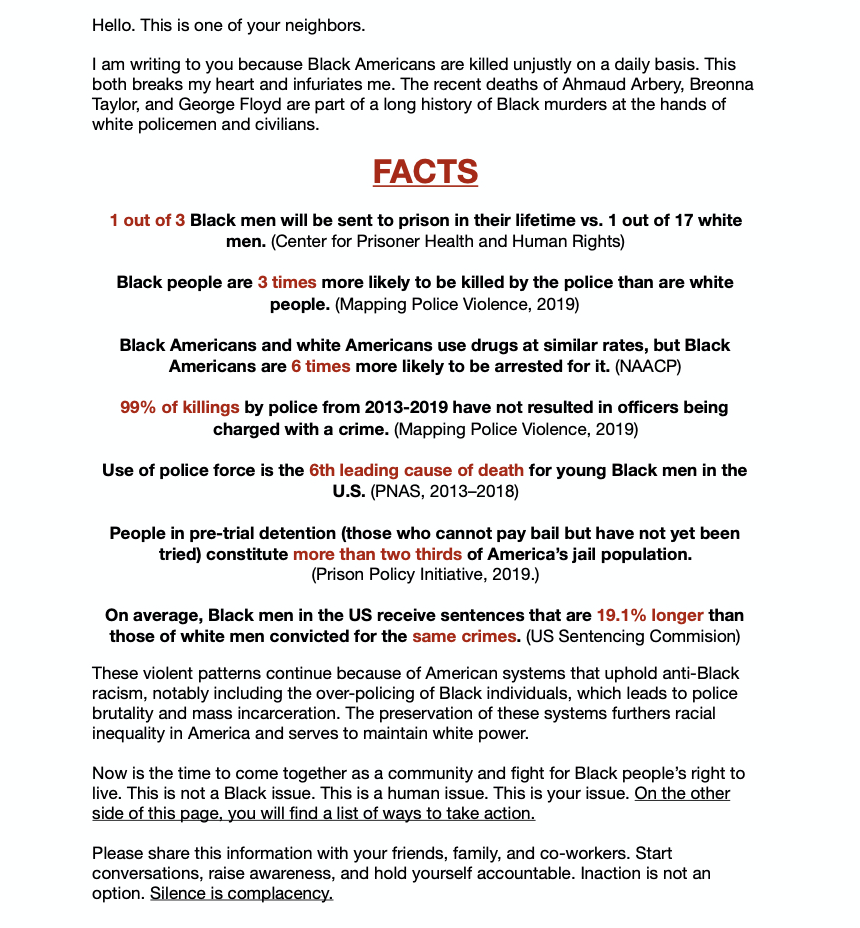
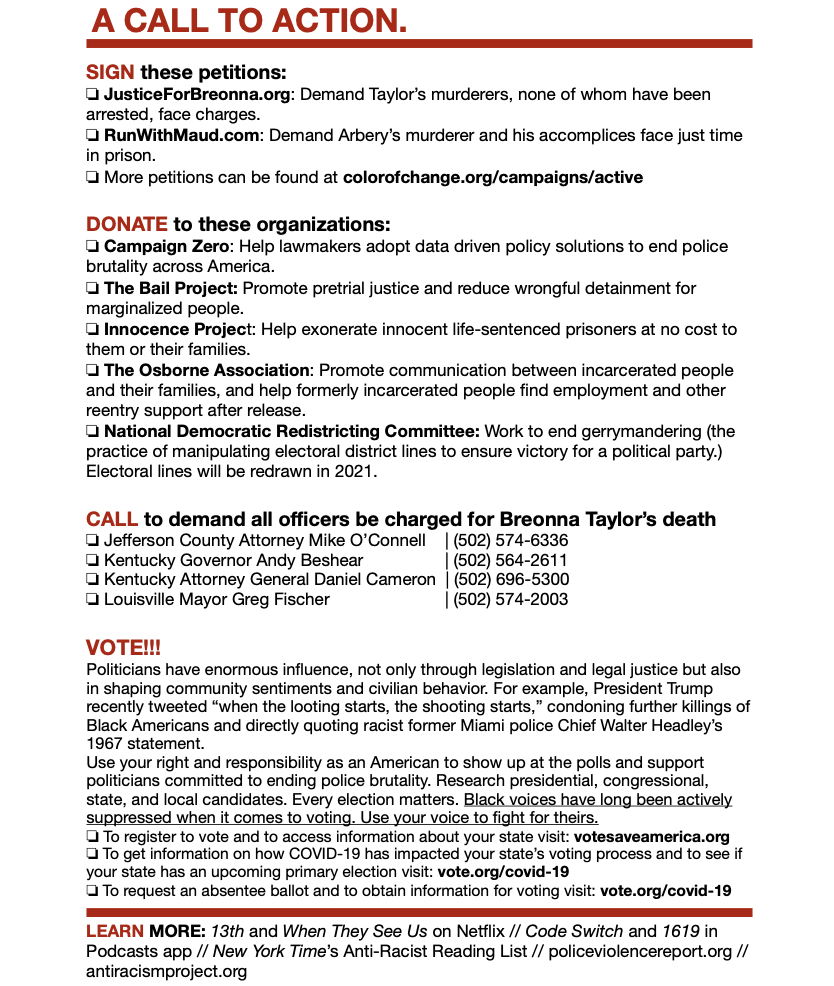
“Hi! Our names are Julia Kushnick and Riena Parente and we both are juniors from Scarsdale High School. Over the past weeks, we have been alarmed by the protests against systemic racism throughout the United States and wanted to take a stance and educate ourselves more on the issue.” On June 7th, 2020, Julia and Riena took action. They walked a marathon, “dedicating each mile to an African-American who has lost a life due to police brutality or other racist citizens, while still recognizing the deaths of the many others.” Throughout the walk, they distributed flyers containing statistics and ways to contribute to their cause at people’s doorsteps in order to raise awareness of the issue at hand. The community was encouraged to help out by printing out the flyers and displaying them throughout their own neighborhoods, or Venmoing by money to them, where 100% of the proceeds went to the Black Lives Matter foundation. Even though Julia and Riena have already successfully completed their marathon, it is not too late to donate to their amazing cause. See below for how you can still get involved!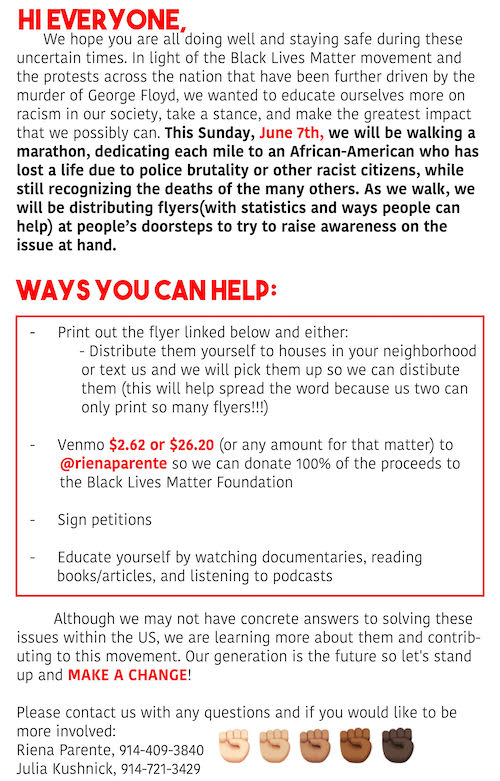
Adam Katcher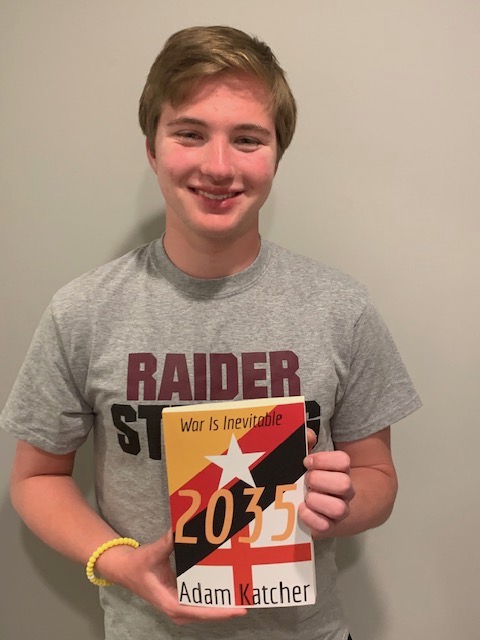 “I’m Adam Katcher, a sophomore at Scarsdale High School. For the majority of my life, I did not think I had a proclivity to writing. One night, the week before Christmas Break, I was restless. I had a handful of tests the next day, so sleep was being interrupted by the pull of the temporary stress. I was thinking of ways to try and turn my conscience away from the imminent exams. As the night wore on, my thoughts started to wander. As my thoughts continued to whirl around, I realized that I was thinking about a story. I was meeting characters whom I had never met. As if there was a prophecy for me to write the story, I shot out of my bed and started typing. After nearly an hour of frantically slamming the keys, the first chapter to my novel was in the works. I felt an obligation to the characters that I had conjured in my imagination, an obligation to make them come to life. And so, every day for the past few months, I made the story come to written fruition. As quarantine gave me extra time, and the ability to work with my English teacher, I finished my novel and have published it on Amazon.
“I’m Adam Katcher, a sophomore at Scarsdale High School. For the majority of my life, I did not think I had a proclivity to writing. One night, the week before Christmas Break, I was restless. I had a handful of tests the next day, so sleep was being interrupted by the pull of the temporary stress. I was thinking of ways to try and turn my conscience away from the imminent exams. As the night wore on, my thoughts started to wander. As my thoughts continued to whirl around, I realized that I was thinking about a story. I was meeting characters whom I had never met. As if there was a prophecy for me to write the story, I shot out of my bed and started typing. After nearly an hour of frantically slamming the keys, the first chapter to my novel was in the works. I felt an obligation to the characters that I had conjured in my imagination, an obligation to make them come to life. And so, every day for the past few months, I made the story come to written fruition. As quarantine gave me extra time, and the ability to work with my English teacher, I finished my novel and have published it on Amazon.
“The book is titled 2035. Here’s the story: The world has always been unpredictable. While the fires of war have flared periodically, by the year 2035, a truly global conflict has not occurred for nearly a century. This story explores friendships in apocalyptic times, as well as the change in emotions and opinions experienced by an 18 year-old high school student. After years of growing animosity between, and within, nations, tensions finally reach a climax. As war breaks out, how does an inexperienced draftee survive during a time where nuclear weapons threaten the existence of humanity? Can there be hope and light in times of despondency?”
Anya Kornfeld on Connection Companions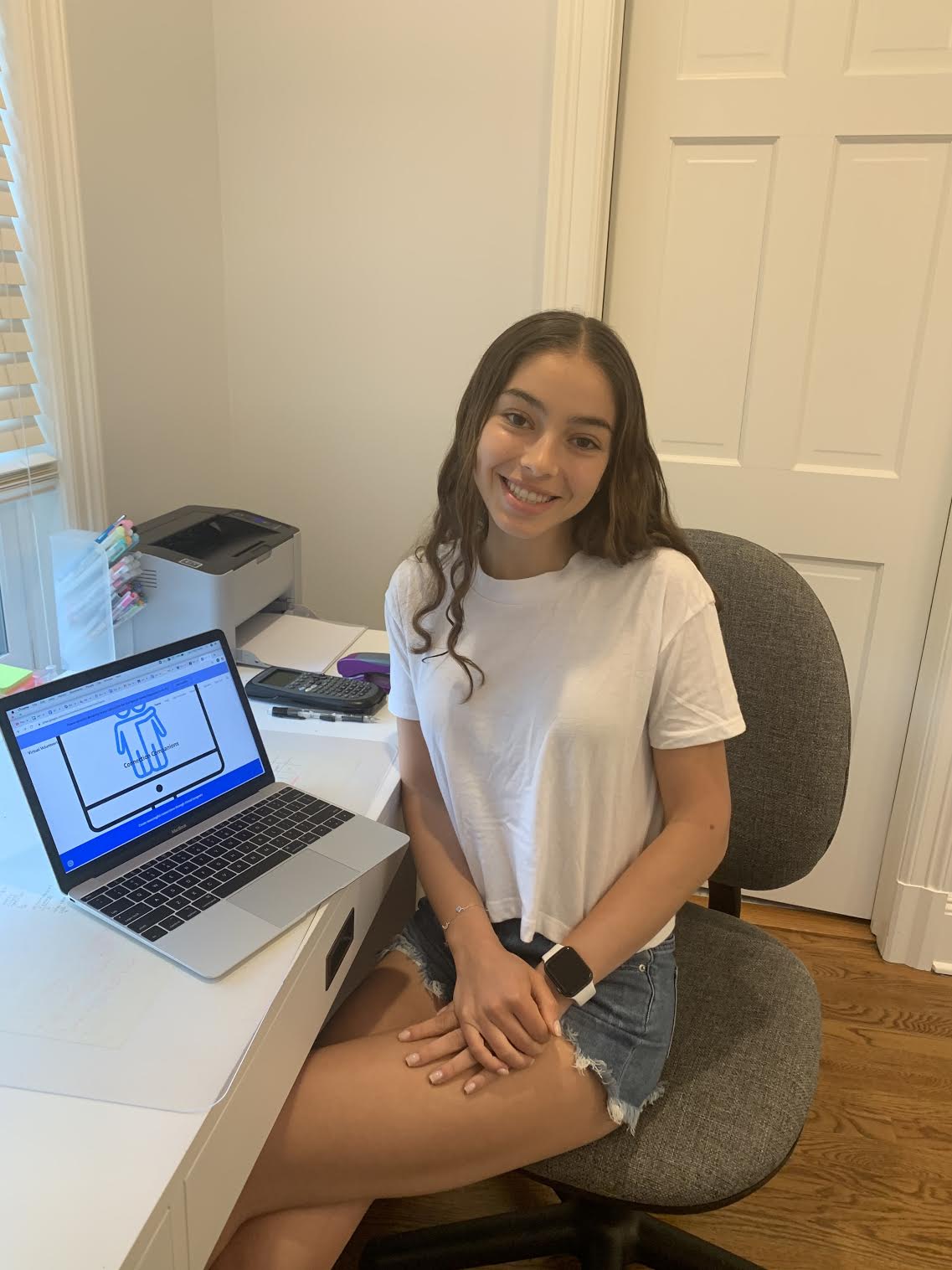 "During these difficult and unprecedented times it is easy to become overwhelmed. I have personally struggled to keep up with schoolwork, create a structured schedule, and maintain my typical level of motivation. I, as well as many of my friends, yearn for the interactions and connections we had in school and other in-person activities such as sports and clubs. While platforms such as Zoom and FaceTime provide great ways for people to stay in touch, as the months have passed in quarantine, it has become increasingly difficult to have meaningful interactions with people.
"During these difficult and unprecedented times it is easy to become overwhelmed. I have personally struggled to keep up with schoolwork, create a structured schedule, and maintain my typical level of motivation. I, as well as many of my friends, yearn for the interactions and connections we had in school and other in-person activities such as sports and clubs. While platforms such as Zoom and FaceTime provide great ways for people to stay in touch, as the months have passed in quarantine, it has become increasingly difficult to have meaningful interactions with people.
"I have been volunteering with kids with special needs during high school through organizations such as the JCC and Backyard Sports. I quickly realized the importance of the time I spent with these kids. Whether I was playing a board game, a sport, or simply talking, these moments provided important connections which helped build crucial social skills. In addition, (and most importantly) the kids, and volunteers, were having fun.
"While it may be difficult for my friends and I to stay in touch during the pandemic, I realized that it is even more difficult for kids with special needs. This is why I thought to start Connection Companions. I, as well as all the volunteers, aim to establish this same connection and help kids with special needs thrive while staying at home.
“I am eager to work with kids and serve our community in such a positive way. As of right now we have 7 children with special needs working with our volunteers. The feedback has been incredible and we are looking to expand our initiative throughout the summer, possibly looking into socially distant playdates.
"If you have a child with special needs and you are looking for someone to play online games, help with homework, play a virtual sport, or just talk, please contact us! There is a form on our website where you can sign up or you may email me directly (anyakornfeld1@gmail.com). We cannot wait to get in touch.
"Finally, we are always looking for volunteers. If you are a high school student and are looking for a meaningful way to spend your time, fill out the volunteer form on our website!
Connection Companions Website
Sarah Jane Traumer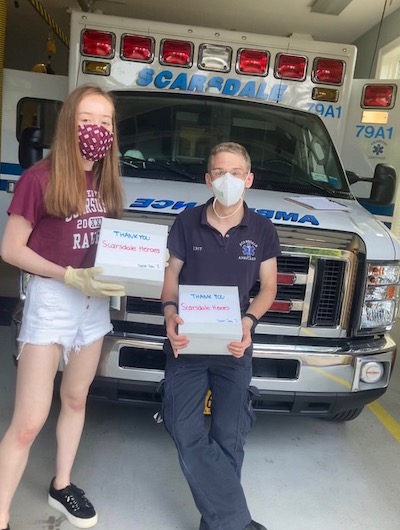 Scarsdale High School Junior Sarah Jane Traumer spent her 17th birthday baking 100 cupcakes for the Scarsdale Heroes. Sarah Jane recognized the bravery of the Scarsdale Heroes, especially the Scarsdale Volunteer Ambulance Corps (SVAC). The SVAC has done extraordinary work on the front line in response to the coronavirus outbreak. Sarah Jane spent the day baking, icing, decorating, and boxing all 100 cupcakes. She delivered the boxes of cupcakes to the SVAC, the three Scarsdale Fire Houses, and the Scarsdale Police Department. Sarah Jane selflessly devoted her birthday to helping the Scarsdale Heroes. She enjoyed spending her birthday giving back to her community.
Scarsdale High School Junior Sarah Jane Traumer spent her 17th birthday baking 100 cupcakes for the Scarsdale Heroes. Sarah Jane recognized the bravery of the Scarsdale Heroes, especially the Scarsdale Volunteer Ambulance Corps (SVAC). The SVAC has done extraordinary work on the front line in response to the coronavirus outbreak. Sarah Jane spent the day baking, icing, decorating, and boxing all 100 cupcakes. She delivered the boxes of cupcakes to the SVAC, the three Scarsdale Fire Houses, and the Scarsdale Police Department. Sarah Jane selflessly devoted her birthday to helping the Scarsdale Heroes. She enjoyed spending her birthday giving back to her community.
Letter from a Reader: If Day Camps Can Open, Why Can't There Be a Graduation?
- Details
- Written by: Joanne Wallenstein
- Hits: 2723
 This letter was sent to the Scarsdale Schools from Shirley High:
This letter was sent to the Scarsdale Schools from Shirley High:
Good afternoon:
Governor Cuomo announced June 29th for summer day camps to open, so why doesn’t Scarsdale do an in-person graduation ceremony June 29th? This is only a 3 day postponement from the original date and would make no sense not to have it.
Let’s please consider giving the kids a meaningful celebration instead of a kitchen table graduation. The 5 minute parade does not make up for a proper graduation. With the 6’ apart and outdoors ceremony should be safe and easily doable.
Please change it to a true in person ceremony on June 29th. It isn’t too late to do so.
Shirley High
Church Lane
Opinion: To Stand Against Racism, Use Your Wallet
- Details
- Written by: Charles Musoff
- Hits: 3176
 This letter was sent to Scarsdale10583 by Charles Musoff:
This letter was sent to Scarsdale10583 by Charles Musoff:
Dear Scarsdale, particularly white people in Scarsdale, if you care about what's happening in this country right now, my question for you is simple: What are you doing to support Black people today?
If you have a platform on social media and you haven't spoken up, why not?
Maybe you don't know what to post, maybe you're nervous to engage with your followers, or maybe you don't want your school or employer to see you take a strong political stance. If that type of justification is currently your bottom line, remind yourself that Black people are dying, and the people killing them rely on white bystanders in order to keep it up. Please, make it clear whom you stand with.
If you've posted on social media but that is the extent of your engagement, what more can you do?
If you just want people to know that you care about racism, ask yourself why that public image is your priority. Instead, prove that you do care and push yourself to take action. You can sign petitions, contact your elected officials, and attend protests, all of which are great, but if there’s only one thing you do, donate. Most of us in Scarsdale are incredibly fortunate to have financial security, even now during the pandemic, which makes donating one of the most direct and most powerful ways we can support Black people right now. If you don't think you, as one individual, will make a difference with your donation, look into where specifically the money goes—maybe to medics or to victims' families—and convince yourself that it will.
If you're donating, where?
Trick question: It doesn't matter as long as the money will work toward racial justice, so don't get hung up on any one cause. If you're having trouble understanding why protestors are looting businesses and don't want to donate to a bail fund, maybe you'd rather support a nonprofit working to rebuild small businesses in the riots' wake. Find an organization or a fund whose mission makes sense to you.
If you're donating, how much?
I'm not asking for a dollar amount; I'm asking for your commitment. Giving a small sum, whatever that means to you, says that you expect others to make a bigger commitment to this effort than you are. If your donation doesn't feel that significant, it probably isn't. Push yourself to donate even more.
Lastly, if you've been arguing with friends and family members about racism, what goals do you and they still share?
Your conversations about race might be getting heated more easily. However, it's worth putting in the effort to find points of commonality and focus on actions you can agree to take now. When you start to feel interpersonal tension overshadow your shared focus on racial justice, don’t end the conversation. Instead, try to walk back through the points you agree upon and turn that into a plan for where to put your money. Even if the recipient organization is a compromise, donating there rather than not at all is a successful step in the right direction.
Altogether, as we work together to support Black people, I hope you put your money where your mouth is. If you have any questions about my message, feel free to send them to charles.musoff@yale.edu.
Note that all linked attachments are sourced from Black Lives Matter Carrd.
- High School Students Launch Quarantine Tutors to Provide Free Online Tutoring
- Scarsdale Rec Camp Cancelled for Summer of 2020: Pool Opening Delayed Until Mid-July
- College Admissions in the Age of COVID: Reflections from SHS Director of Counseling Oren Iosepovici
- SHS PTA Scholarship Fund for College Needs Your Generosity










